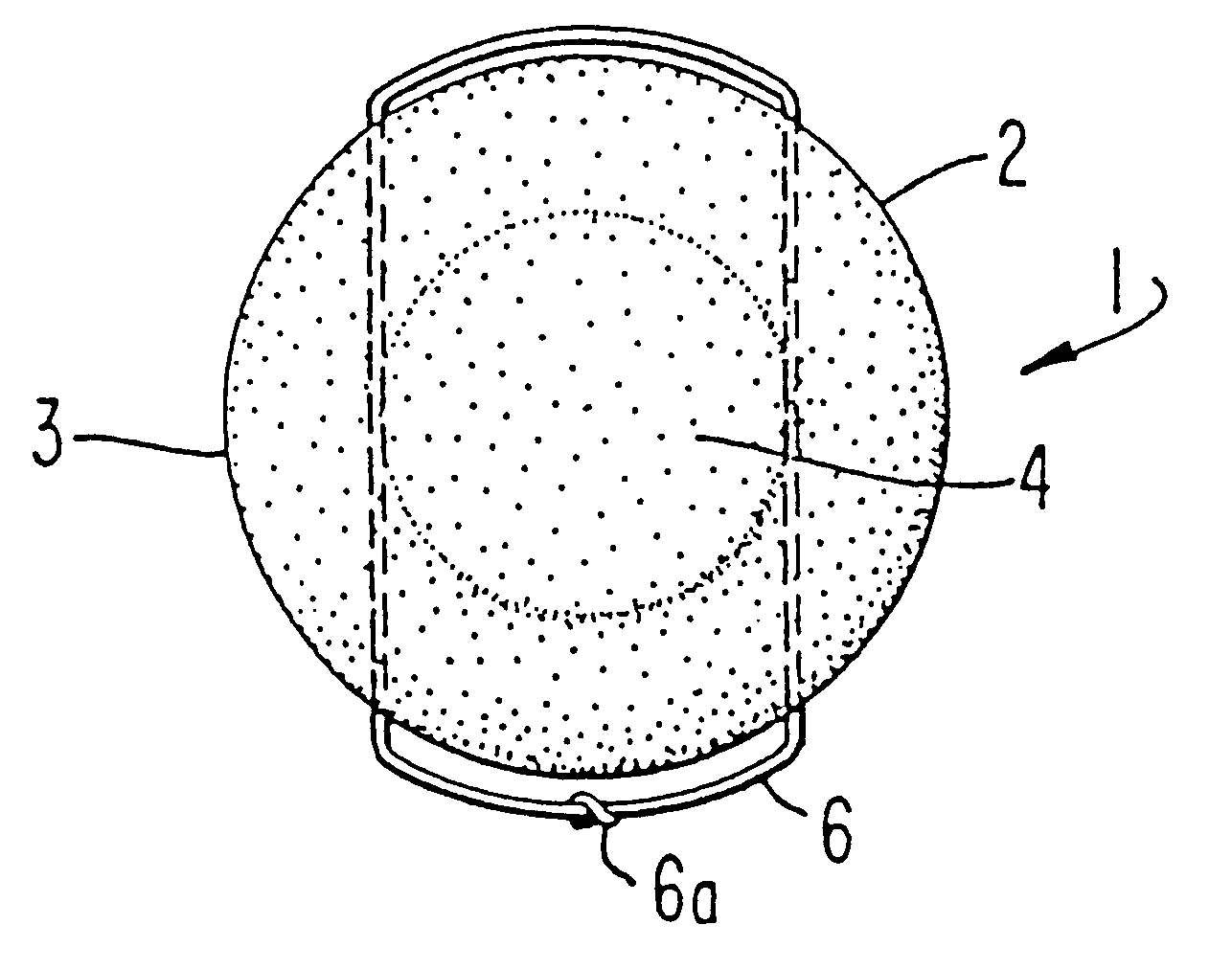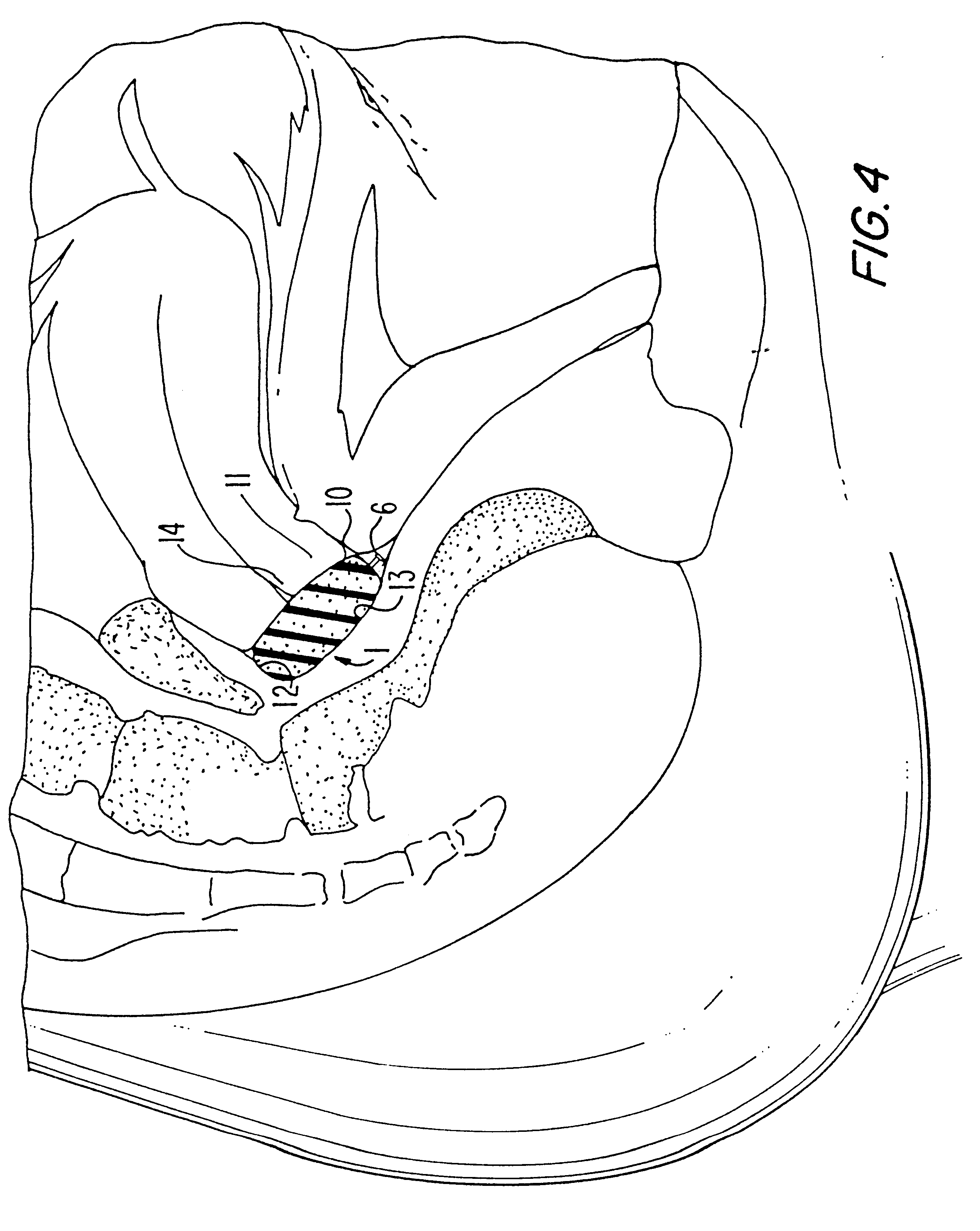Composition and method for prevention of sexually transmitted diseases, including aids
a technology for sexually transmitted diseases and preparation methods, applied in the field of sexually transmitted diseases, can solve the problems of reducing the effectiveness of medication, affecting the health of women, and affecting the quality of life of women, and affecting the quality of life of women,
- Summary
- Abstract
- Description
- Claims
- Application Information
AI Technical Summary
Benefits of technology
Problems solved by technology
Method used
Image
Examples
example 1
Table 1 below provides a topical spermicide contraceptive formulation providing for sexually transmitted disease protection. The spermicide formulation is prepared by mixing the ingredients together. A polyether-polyol derived polyurethane sponge of 2 1 / 4 inches in diameter having about 100 cells per lineal inch and a density of about 3 pounds per cubic foot and a tensile strength of about 18-20 psi was impregnated with 6,500 milligrams of solution to provide a sponge weighing 8,200 milligrams, the dry weight of the sponge being 1,700 milligrams.
The freely releasable amount of liquid reservoir is 4,800 milligrams. In this instance, 1,000 milligrams of solution are deposited on the wall tissue to the vagina upon insertion and another 1,000 milligrams are deposited upon removal. The other 2,800 milligrams are made available for sustained release during the period of use.
This embodiment provides a broad spectrum of protection from a variety of microorganisms. The combination of the thr...
example 2
Table 2 below sets forth an alternative formulation useful in the invention.
With respect to the constituents of the spermicidal formulation, the nonylphenoxypoly(ethyleneoxy)ethanol is commercially available from a number of producers. All the constituent ingredients of the spermicidal formulation are USP grade and are obtainable from conventional sources.
While the spermicide nonylphenoxypoly(ethyleneoxy) ethanol is exemplified herein, it is not envisioned that this will be the only spermicide utilized by the invention. Other spermicide, such as but not limited to propranolol, alkonium chloride, octoxynol-9; menfetol; dodecaethyleneglycol monolaurate laurethios, methoxypoly-oxyethyleneglycol 550 laurate may also be used.
example 3
Dysmenorrhea Control Therapy (DCT-Sponge)
Dysmenorrhea, or painful menstruation, is the most common of the gynecological disorders. Some degree of painful discomfort is experienced by over half of all women and approximately 10% of these are incapacitated for as much as one to three days each month. The cause of dysmenorrhea is now understood extensively, and has been virtually proven through the use of prostaglandin (PG) synthetase inhibitors.
Primary dysmenorrhea is menstrual pain observed in the absence of any other identifying cause such as pelvic lesions or infection. The pain begins with the onset of menstruation and may last for a few hours or may continue throughout several days. It is of a spasmodic, colicky, labor-like nature, but is sometimes described as severe aching or heaviness in the lower abdomen and the lower back. Nervous symptoms usually accompany the pelvic pain and sometimes nausea, vomiting, diarrhea, headache, and dizziness are experienced. The pain and the acc...
PUM
 Login to View More
Login to View More Abstract
Description
Claims
Application Information
 Login to View More
Login to View More - R&D
- Intellectual Property
- Life Sciences
- Materials
- Tech Scout
- Unparalleled Data Quality
- Higher Quality Content
- 60% Fewer Hallucinations
Browse by: Latest US Patents, China's latest patents, Technical Efficacy Thesaurus, Application Domain, Technology Topic, Popular Technical Reports.
© 2025 PatSnap. All rights reserved.Legal|Privacy policy|Modern Slavery Act Transparency Statement|Sitemap|About US| Contact US: help@patsnap.com



